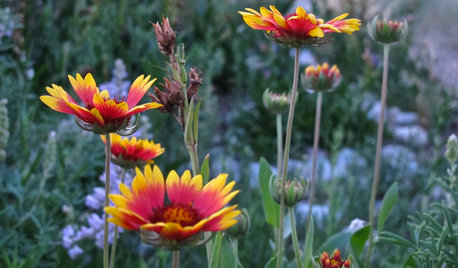Heirlooms for Oklahoma?
dragon9206
12 years ago
Related Stories

HOUZZ TOURSMy Houzz: French Country Meets Southern Farmhouse Style in Georgia
Industrious DIYers use antique furniture, collections and warm colors to cozy up their traditional home
Full Story
HOUZZ TOURSMy Houzz: A Surprisingly Light Lakeside Log Cabin
Light gray paint and lots of natural light take this cabin on a Michigan lake out of moody country
Full Story
GARDENING GUIDESThese Hummingbird-Attracting Native Plants May Surprise You
These flowers, vines and shrubs offer shelter and food supplies that keep hummingbirds around longer
Full Story
BASEMENTSDesign Workshop: Is It Time to Let Basements Become Extinct?
Costly and often unnecessary, basements may become obsolete — if they aren’t already. Here are responses to every reason to keep them around
Full Story
GARAGESHouzz Call: How Do You Put Your Garage to Work for Your Home?
Cars, storage, crafts, relaxing ... all of the above? Upload a photo of your garage and tell us how it performs as a workhorse
Full Story
BATHROOM VANITIESHow to Pick Out a Bathroom Vanity
Choose the right materials, style and size for a vanity that fits your bathroom and works for your needs
Full Story
HOUZZ TOURSMy Houzz: Beachy Bliss in a Dallas Rambler
Coastal colors and an open layout give a family home in Texas a casual, friendly air
Full Story
HOUZZ TOURSMy Houzz: A Circle of Friends Turns a Dallas House Into a Home
Homeowners enlist help from friends to remodel, build an addition and decorate their home
Full Story
HOUZZ TOURSMy Houzz: Arts and Crafts Inspires a Midcentury Home
Antiques and modern touches combine seamlessly in a personalized remodel for a Dallas couple
Full StorySponsored
More Discussions






soonergrandmom
dragon9206Original Author
Related Professionals
Canton Landscape Architects & Landscape Designers · East Rancho Dominguez Landscape Architects & Landscape Designers · Essex Landscape Architects & Landscape Designers · Costa Mesa Landscape Contractors · Fair Lawn Landscape Contractors · Forest Hills Landscape Contractors · Hendersonville Landscape Contractors · New Berlin Landscape Contractors · Oak Forest Landscape Contractors · Riverhead Landscape Contractors · Sugar Hill Landscape Contractors · Wilton Landscape Contractors · Bowie Decks, Patios & Outdoor Enclosures · Glendale Decks, Patios & Outdoor Enclosures · Pueblo West Decks, Patios & Outdoor EnclosuresOkiedawn OK Zone 7
mjandkids
Macmex
dragon9206Original Author
elkwc
Macmex